- Two-high shells: Schemes that align two safeties deep pre-snap are becoming more common in today's NFL, so it's important to evaluate how QBs fare in that context when evaluating them for the pros.
- Bryce Young and C.J. Stroud thrive: Each quarterback performed exceedingly well against two-high shells during their college careers.
- Anthony Richardson and Will Levis show some warts: While their performance in this facet is troublesome, each needs to improve their play against two-high defenses if they want to have successful NFL careers.
Estimated reading time: 8 minutes
Over the last few NFL seasons, defensive coordinators have increasingly turned to two-high schemes, which feature two high safeties pre-snap. This alignment provides defensive flexibility, allowing defenses to easily rotate into various coverages after the snap while simultaneously disguising what the coverage call actually is. Common coverage calls from two-high looks include Cover 4 (quarters), Cover 6 (quarter-quarter-half), Cover 2 and Cover 3. Alabama head coach Nick Saban has long been running “rip” and “liz” Cover 3 coverages — a variation of Cover 3 match from a two-high look pre-snap where one of the safeties will drop to the deep middle zone and the other will rotate to play an underneath zone at the snap. As often happens, much of the college football ranks have followed suit, and we now see two-high schemes frequently throughout college football.
The success of Vic Fangio’s two-high scheme with the Chicago Bears (2015-18) and Denver Broncos (2019-21) has contributed to a surge in the scheme’s NFL popularity. We’ve seen several defensive play callers, including Los Angeles Chargers head coach Brandon Staley, hired from the Fangio coaching tree. As a result, there has been a steady rise in these defensive play calls around the league over the last three years, with two-high zone defenses called on the following percentage of pass plays:
- 2020: 36.9%
- 2021: 42.6%
- 2022: 46.3%
This number will likely continue to rise due to Fangio’s return to the NFL, as he joined the Miami Dolphins to transform a defense that ran Cover 1 at the second-highest frequency in the league and presented the fewest two-high looks in 2022. Expect that to change drastically.
As two-high coverages consume NFL defenses, it’s imperative to evaluate the top quarterbacks in the upcoming NFL draft through the lens of their performance against these two-high looks. The consensus top four quarterbacks in the 2023 draft class are Ohio State’s C.J. Stroud, Alabama’s Bryce Young, Florida’s Anthony Richardson, and Kentucky’s Will Levis. In this analysis, we will focus on their performance against two-high zone defenses while omitting man defenses, as man defenses generally require a different type of processing from the quarterback. General passing analytics referenced in this article will exclude screens and spikes while specified passing statistics against two-high looks will exclude screens, spikes and RPO (run-pass option) plays, thus allowing us to isolate plays where the quarterback is reading the defense as opposed to a single defender. Let’s kick things off by comparing these quarterback’s grades and analytics to their counterparts against two-high zone looks.
| Player | Grade | BTT% (overall/two-high) | TWP%(overall/two-high) | % of dropbacks vs two-high |
| C.J. Stroud | 89.8 overall/86.9 two-high | 7.8%/8.3% | 4.0%/4.3% | 52.60% |
| Bryce Young | 91.6 overall/91.5 two-high | 6.4%/5.4% | 2.2%/2.4% | 40.60% |
| Anthony Richardson | 70.5 overall/54.6 two-high | 6.3%/4.3% | 3.7%/5.8% | 39.20% |
| Will Levis | 64.2/61.7 two-high | 2.7%/5.6% | 4.3%/6.4% | 41.50% |
While three of the four quarterbacks stayed within three points of their all-encompassing counterpart, Anthony Richardson, commonly referenced as rawest of the four, dropped a staggering 15.9 points. After reviewing his two-high snaps, his struggles simmered down to a sour cocktail of inconsistent footwork and decision-making as well as a processing speed that was often a tad too slow.
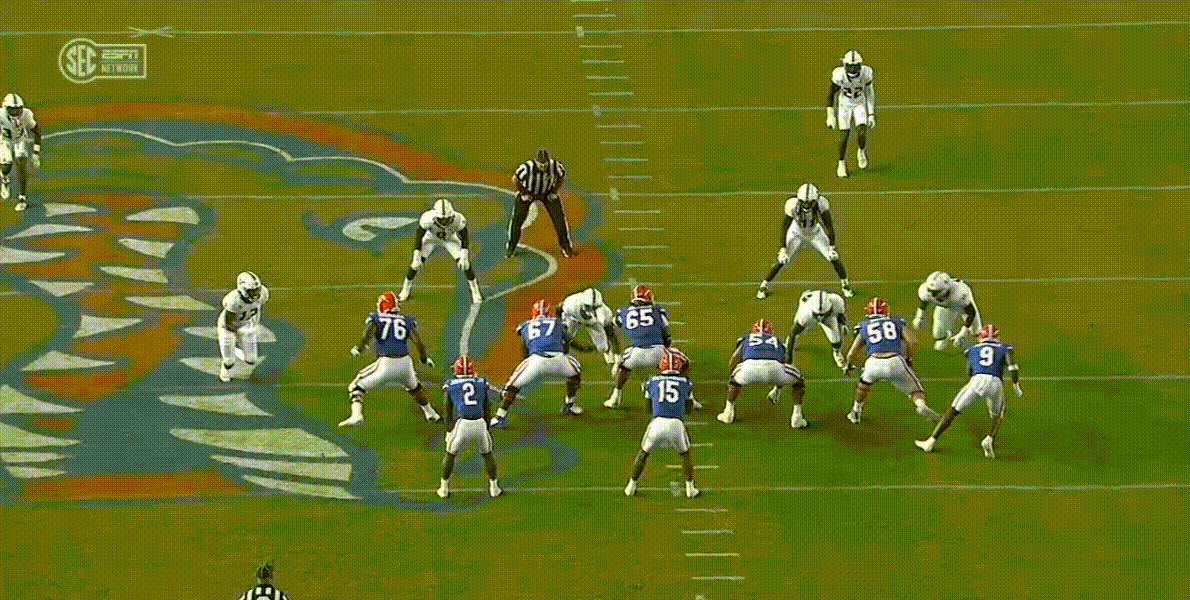
Decisions like this one above are what led to Richardson’s turnover-worthy play percentage rising from 3.7% on the whole to a more ominous 5.8% against two-high defenses.
On this play against USF, Richardson is reading the Cover 2 half of a Cover 6 look. He takes too long and misses his receiver who’s flashing open on a crossing route between zones of the defense. The lower half of his body then panics and his feet slip out from under him as he throws a fadeaway ball with no base directly into coverage. While this turnover was vile, the makings of a successful play result are here. If he comes off his first read a hair sooner, this is an easy completion. The suddenness as he whipped his head from his first to second read was notable, but we just need him to pull the trigger quicker. This is coachable.
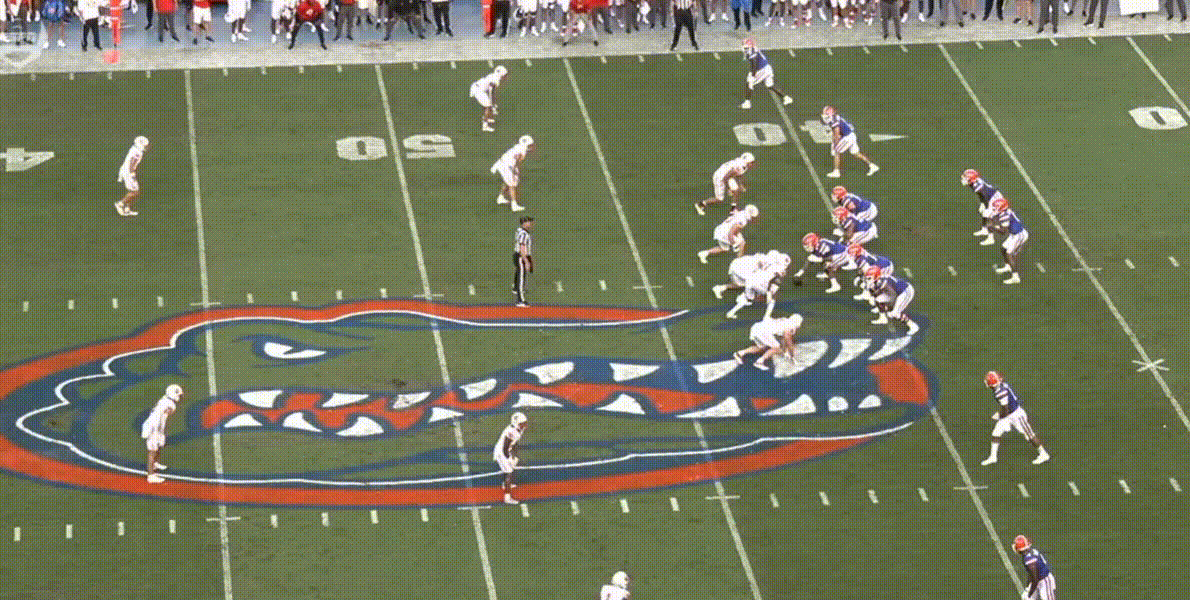
While Richardson’s big-time throw rate dropped from 6.4% overall to 5.4% against two-high defensive shells, he still flashed what he could be in a reality where it all pans out. In a critical third-and-15 situation against Utah, Richardson demonstrated veteran-level poise as he dissected Utah’s inverted Cover 2 defensive call and confidently delivered a strike up the seam for a crucial first down. These are the kind of throws that give a team hope if he’s drafted inside the top 10.
Richardson’s thorns are routinely seen from quarterbacks on the raw side of the spectrum and are not in themselves terribly alarming. However, they are something we must take note of in our pre-draft evaluations as far more complex looks will be thrown his way in the NFL.
Conversely, Stroud and Young’s ability to maintain a high-level grade versus these more structured defenses only reinforces our opinions of them as NFL-ready talents.
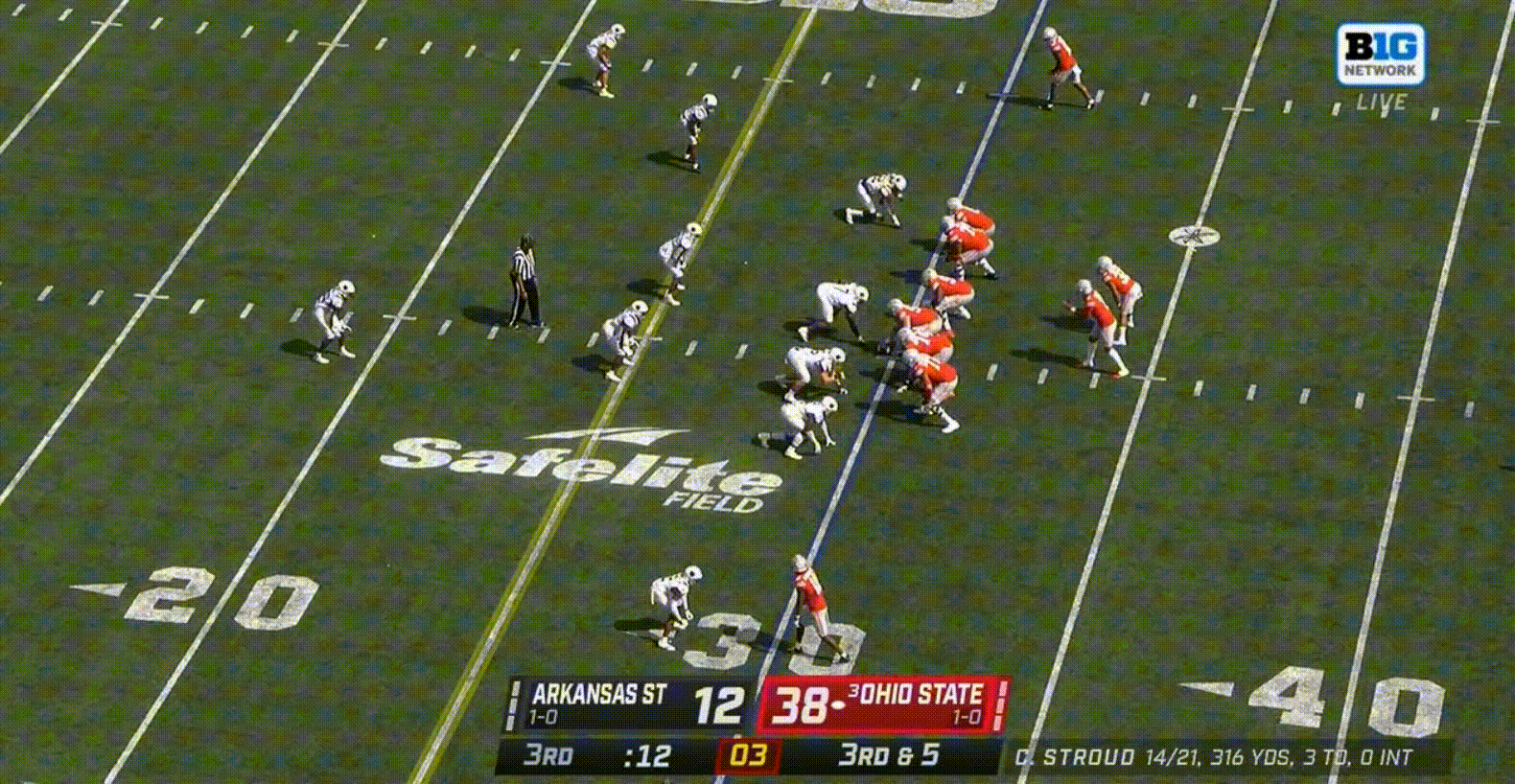
Before this clip starts, Stroud looks to his left and sees the boundary corner in press-man coverage. Note that while this boundary corner is playing man, the defense is actually playing Cover 4. When he sees the boundary safety rotate his hips inside in a poach technique looking to find a deep crosser from the strong side of the 3×1 formation, Stroud knows the go route has open access. He does an excellent job of putting the ball where it needs to be, shielding his receiver from the closing safety. This was a superb read, and this brand of perfect reads against two-high shells are littered all throughout his tape. In fact, he managed to actually raise his already stellar big-time throw rate from 7.8% overall to 8.3% against two-high defensive shells.
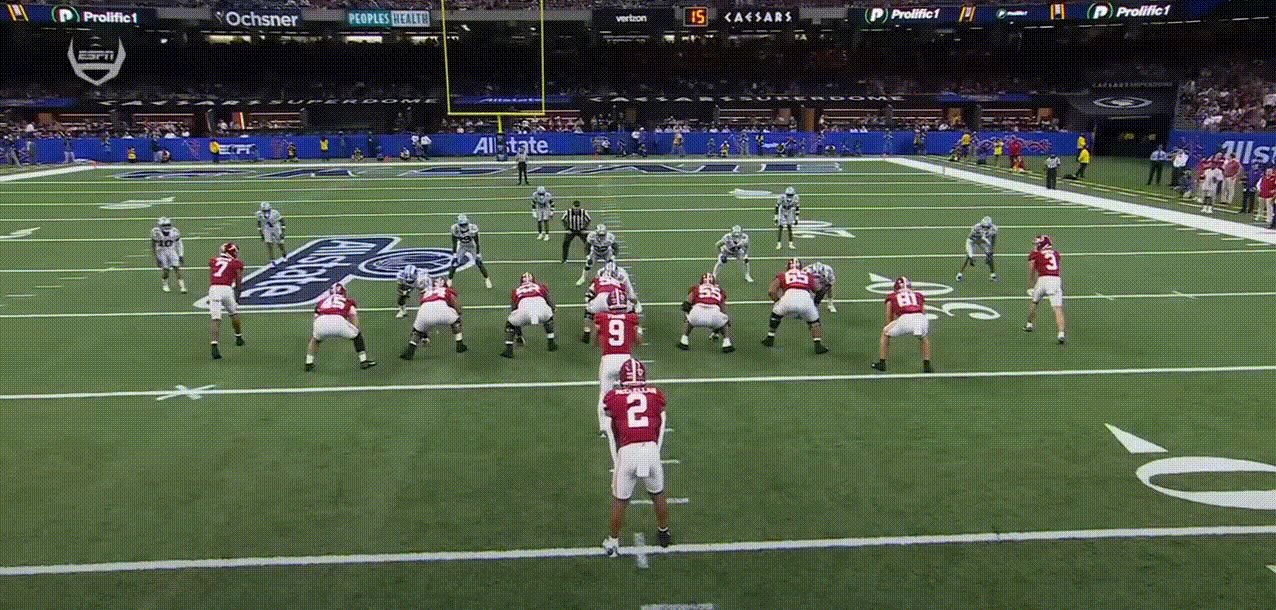
This play is an excellent showcase of Young‘s ability to read coverages. Over the course of the season and throughout this game, Kansas State's most called coverage was Cover 3, which is exactly what Alabama is hunting for here. Young is presented with a two-high shell pre-snap on first-and-10. Alabama is running a variation of the swap boot concept with a deep hitch to the boundary to bait the outside boundary corner and allow the receiver running a deep over from the field side to work behind him if the defense is indeed in Cover 3 (spoiler: They are). With an epic peek before the fake, Young sees the boundary safety rotating down and knows the throw he wants is going to be available. His talent takes over from there, and we’re left with a true work of art as he fits the ball in over the top of the closing defender.
Unlike Stroud and Young, Levis’ tape evaluation against two-high shells feels strange. This is highlighted by the fact that he actually doubled his overall big-time throw rate against two-high defenses, raising a poor 2.8% to a respectable 5.6% while simultaneously seeing a negative shift in his turnover-worthy play percentage from 4.3% to 6.4%. This development resulted in his grade dropping from 64.2 overall to 61.7 against two-high shells. Upon reviewing his film, I noticed these common themes: an abundance of pressure that often broke down plays before a proper evaluation could be made, a rocket-armed assassin wreaking havoc with a missile that can seek its way to any point on the field, and a hesitancy to take what’s being given along with a stubbornness to move to his second read.
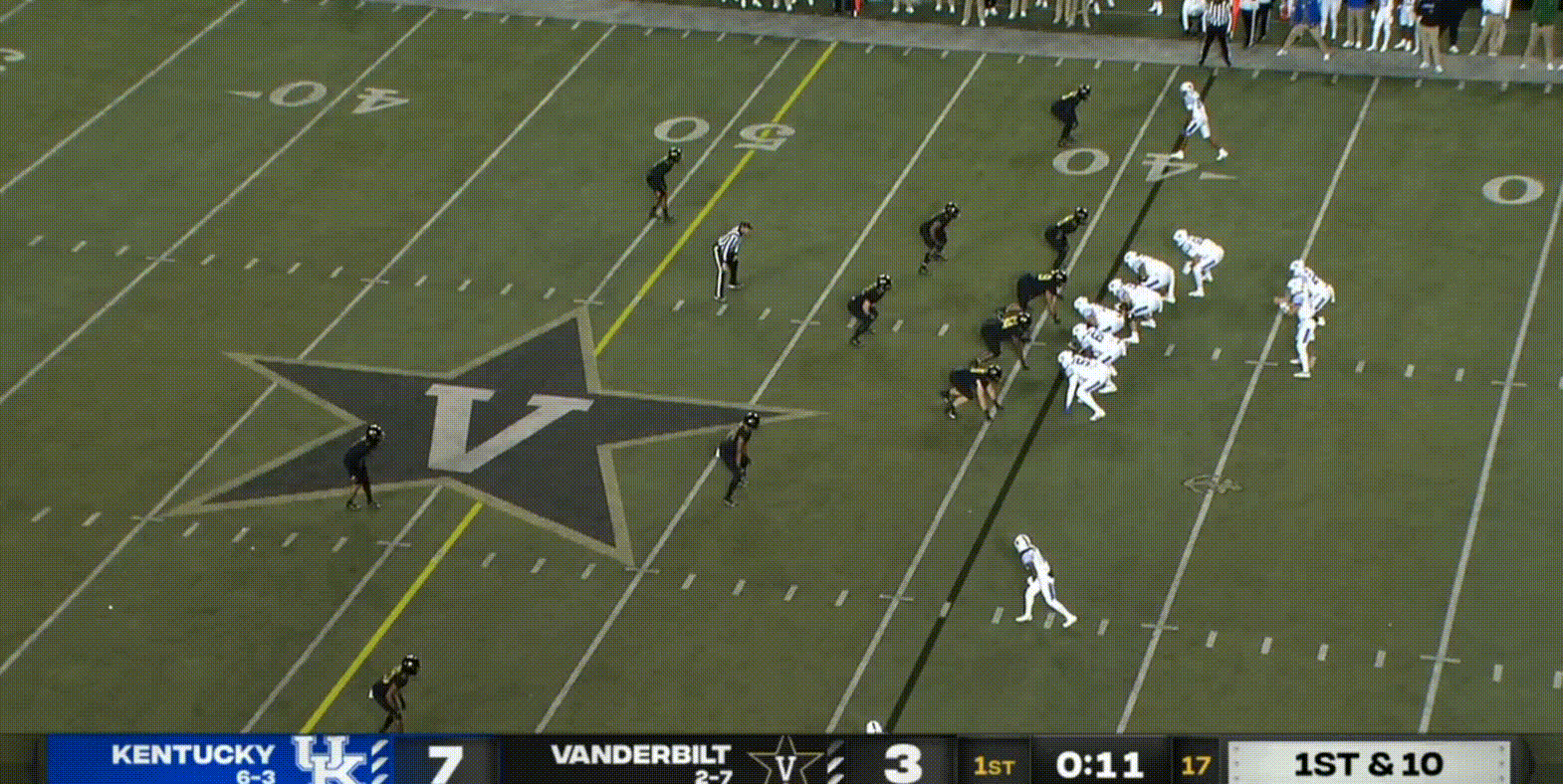
Above we see Levis at his best in 2021. Vanderbilt presents a Cover 4 shell on this play, with the field safety working with inside leverage on the slot receiver. Levis recognized and delivered a well-placed ball to the receiver's outside shoulder while under pressure.
If only it were always so simple.
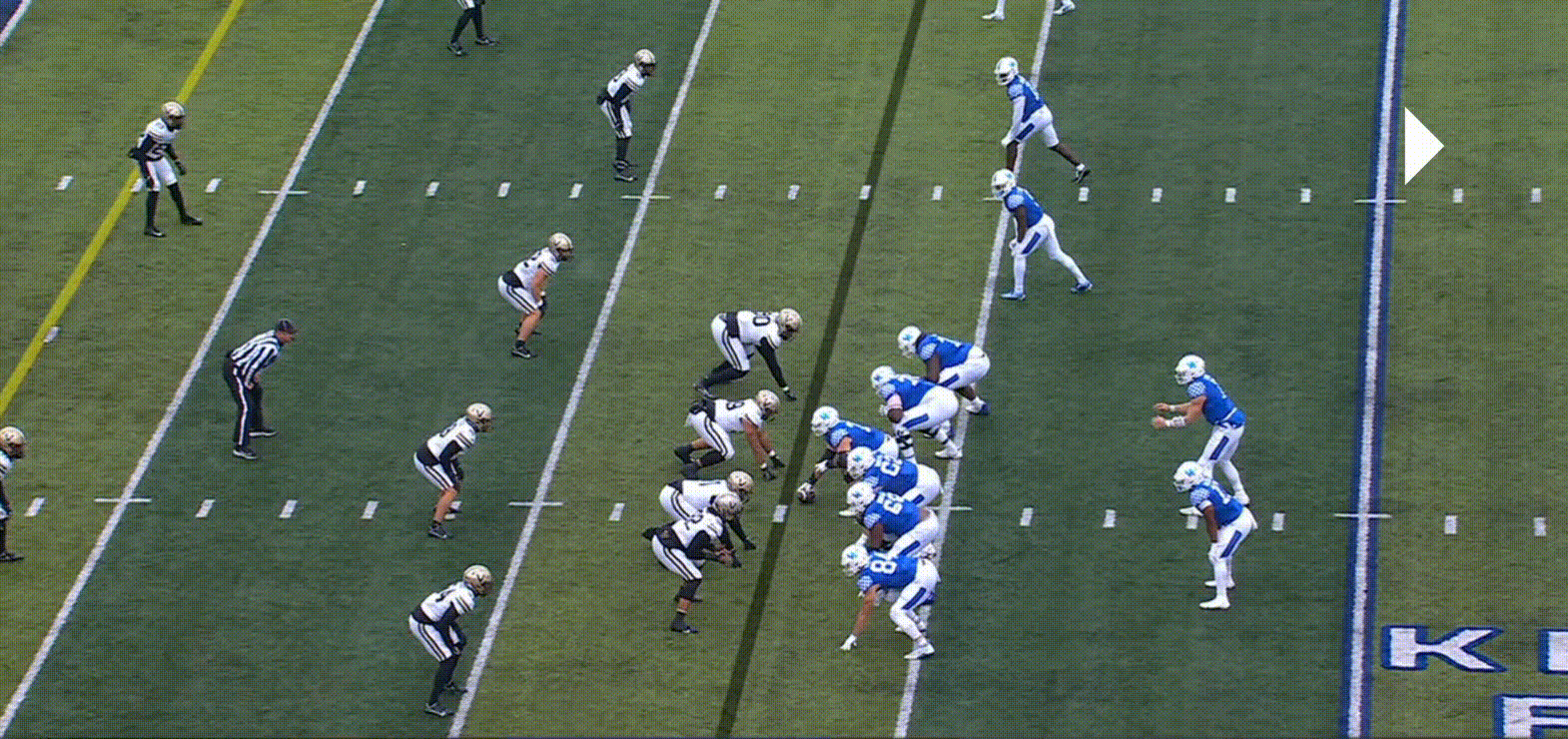
Here is an example of Levis refusing to work to his second read. The defense is playing Cover 2 to the boundary in a red zone Cover 6 call. The moment Levis sees the boundary corner stick in the flats, he should work his eyes back to the field where he has a receiver running free. Instead, he takes forever to process a simple coverage and holds the ball, resulting in a sack. These are the frustrating plays that could lead some teams to steer clear.
As defenses continue to evolve and adapt to the ever-changing landscape of the NFL, it’s crucial for incoming quarterbacks to be able to read and attack the two-high zone defensive looks that have become increasingly prevalent. While Stroud and Young demonstrated mastery in this regard, Levis and Richardson's tape suggests improvement in this area will be paramount to a positive career trajectory. Success in the NFL hinges on adaptability, and teams looking to build for the future would be wise to emphasize identifying quarterbacks who can effectively pick apart two-high zone defenses.
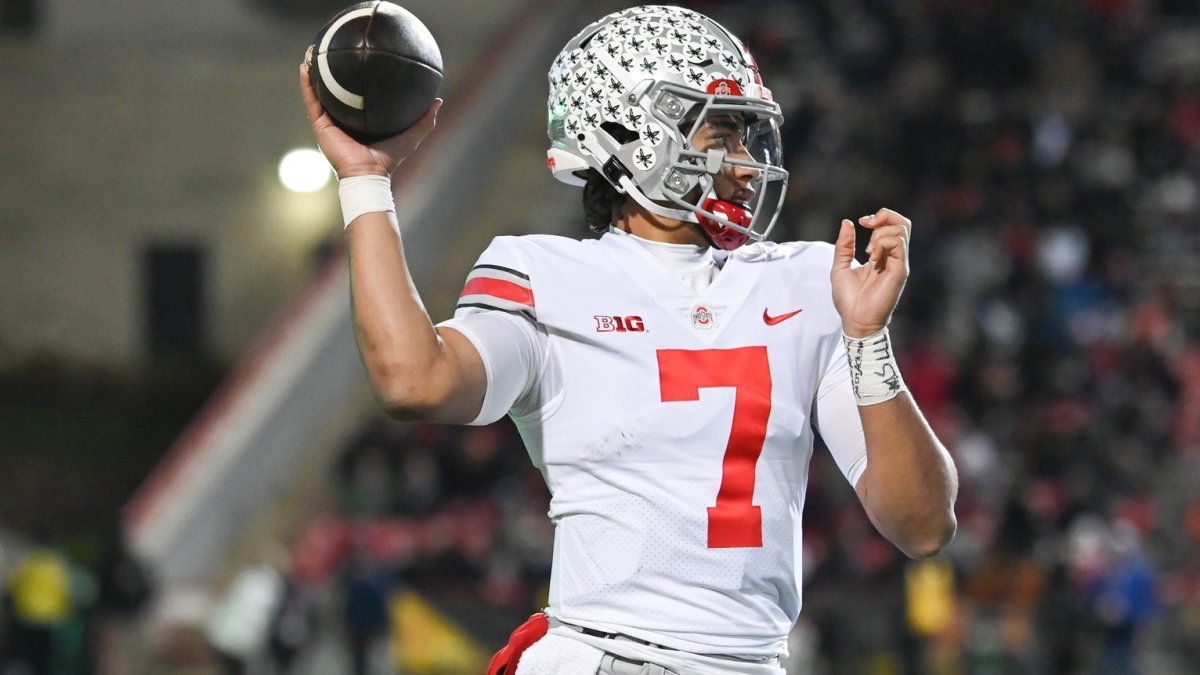


 © 2025 PFF - all rights reserved.
© 2025 PFF - all rights reserved.